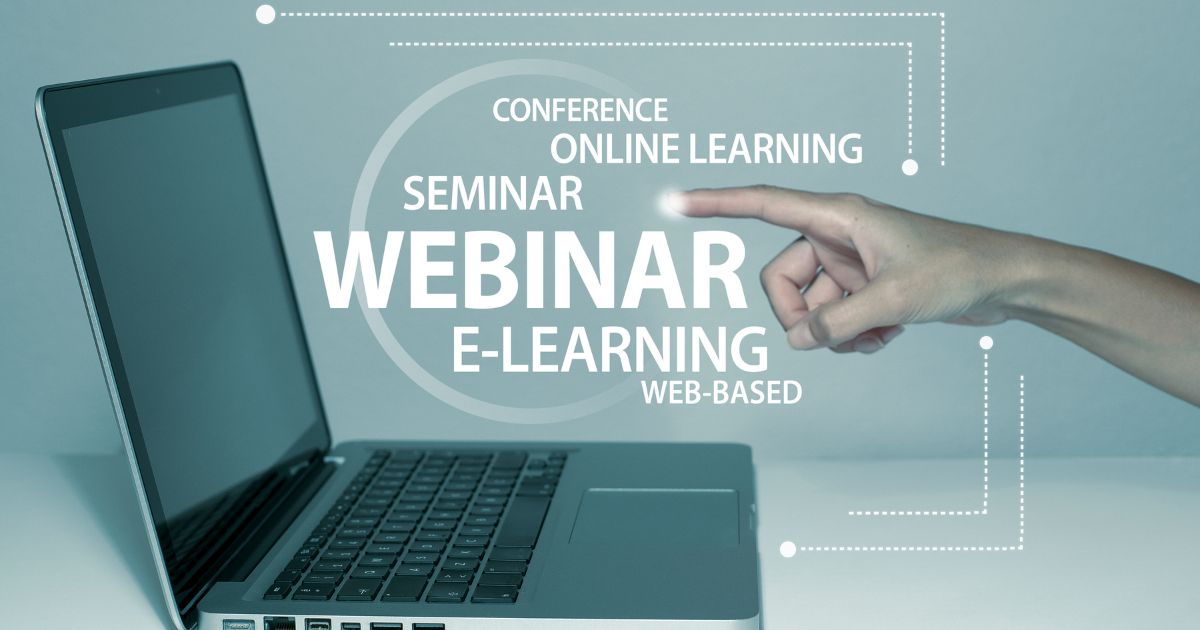
The way people search for information is changing. Instead of typing keywords into Google, many are now asking questions to voice assistants or AI chatbots, such as ChatGPT and Perplexity. This shift toward conversational queries has given rise to Answer Engine Optimization (AEO) and Generative Engine Optimization (GEO). For marketers, this means rethinking how we make our content discoverable.
Webinars are a cornerstone of many content marketing strategies, providing in-depth discussions of specific topics and generating valuable leads. But are your webinars prepared for this new era of search? If your content isn’t structured to provide direct answers, you’re missing out on a significant and growing source of traffic.
This guide will walk you through how to optimize your webinars for answer engines and generative AI. You’ll learn practical strategies to increase your visibility, attract a targeted audience, and ensure your expert insights reach those who need them most.
Understanding the New Search Landscape
Before we get into the “how,” let’s clarify what we’re optimizing for. Traditional SEO focused on ranking for specific keywords. The new landscape is more complex and conversational.
What is Answer Engine Optimization (AEO)?
Answer Engine Optimization (AEO) is the process of optimizing content to directly answer user questions. Think about voice search queries on devices like Amazon Alexa or Google Assistant. When a user asks, “What are the best practices for email marketing?” the device provides a single, concise answer. AEO aims to make your content the definitive source.
What is Generative Engine Optimization (GEO)?
Generative Engine Optimization (GEO) takes this a step further. It involves optimizing your content so that generative AI models, like those powering ChatGPT and Google’s SGE (Search Generative Experience), use it to construct their answers. When an AI summarizes information or provides a detailed explanation, GEO helps ensure your brand’s perspective is included, often with a citation and a link back to your site.
For webinars, both AEO and GEO are crucial. Your goal is to structure your webinar content so it can be easily repurposed into direct answers that both answer engines and generative AI can find and feature.
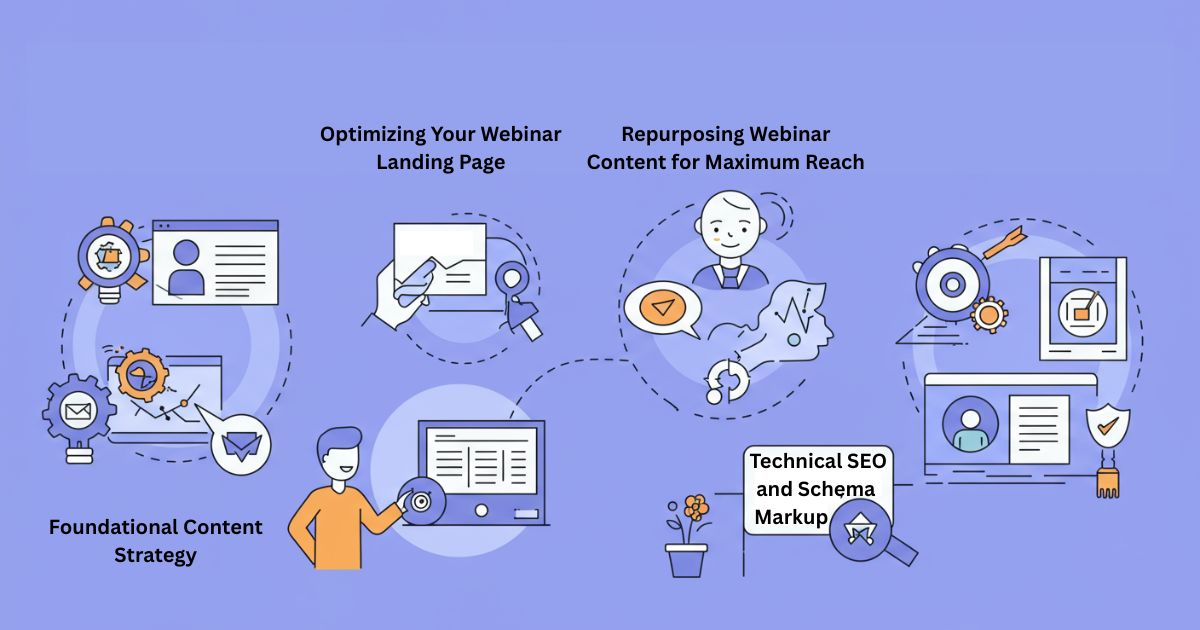
Step 1: Foundational Content Strategy
Optimizing for AI search starts long before your webinar goes live. It begins with a strategy rooted in understanding your audience’s questions.
Identify Core Audience Questions
What questions are your potential customers asking? Use tools like AnswerThePublic, Google’s “People Also Ask” section, and forums like Quora and Reddit to find out. Your webinar topic should address a significant pain point or question your audience has. For example, instead of a broad topic like “Digital Marketing,” focus on a specific question, such as “How do I create a digital marketing budget for a small business?”
Structure Your Webinar for “Answerability”
Organize your webinar like a Q&A session, even if it’s a presentation. Break down your main topic into a series of smaller, logical questions and answer each one clearly.
- Create a clear agenda: Share an agenda at the beginning that outlines the key questions you will answer. This acts as a roadmap for both your live audience and the search engine crawlers that will later index your content.
- Use question-based headings: Structure your presentation slides and subsequent promotional content (like the landing page and blog posts) with headings phrased as questions (e.g., “What is AEO?”).
- Dedicate sections to key topics: If your webinar covers “5 Ways to Improve Customer Retention,” dedicate a distinct section to each of the five ways. This modular structure makes it easier for AI to pull out specific pieces of information.
Step 2: Optimizing Your Webinar Landing Page
Your webinar’s landing page is the first piece of content search engines will see. It needs to be rich with information that signals what your webinar is about and what questions it will answer.
Write a Detailed, SEO-Friendly Description
Don’t settle for a short, generic summary. Write a comprehensive description that details the topics you’ll cover. Naturally, weave in your target keywords and related terms (LSI keywords) to enhance your content’s relevance. Most importantly, phrase parts of your description as direct questions and answers.
Example:
Instead of: “This webinar will cover content promotion.”
Try: “Struggling to get eyes on your content? In this webinar, we’ll answer the critical question: What are the most effective channels for content promotion in 2025? You will learn how to leverage social media, email marketing, and SEO to maximize your reach.”
Include a Full Agenda and Speaker Bios
List the full agenda on your landing page using H2 or H3 tags for each agenda item. This structured data is easily digestible for search crawlers. Include detailed speaker bios that establish their expertise and authority on the topic. Authority is a key signal for both traditional SEO and the new AI-driven search models.
Add an FAQ Section
An FAQ section is a goldmine for AEO and GEO. Directly answer common questions related to your webinar topic. This not only provides value to potential attendees but also creates perfectly formatted content for search engines to pull into answer snippets and generative AI responses.
Step 3: Repurposing Webinar Content for Maximum Reach
The real optimization magic happens after your webinar is over. By repurposing your content into various formats, you create multiple assets that can rank in search results and be featured by AI.
Create a Transcript and Blog Post
The most valuable asset you can create is a full transcript of your webinar. Post this transcript on your blog, formatted as a comprehensive article.
- Clean it up: Edit the transcript for clarity and readability. Remove filler words and fix any grammatical errors.
- Add headings and structure: Break the transcript into sections with clear, question-based H2 and H3 headings.
- Embed the video: Include the webinar recording within the blog post to increase engagement and time on page.
- Pull out key quotes: Use blockquotes to highlight key insights. These are often pulled directly into search results.
Break It Down into Micro-Content
Not everyone will read a 3,000-word blog post. Break your webinar down into smaller, shareable pieces of content.
- Short Video Clips: Create short (1-3 minute) video clips answering a single question from your webinar. Post these on YouTube, LinkedIn, and other social platforms with optimized titles and descriptions.
- Infographics: Turn key statistics or processes from your webinar into a visually appealing infographic.
- Social Media Posts: Create a series of social media posts, each addressing a different question or tip from the webinar.
Step 4: Technical SEO and Schema Markup
To give search engines the best possible chance of understanding your content, you need to apply some technical SEO best practices.
Implement FAQ and How-To Schema
Schema markup is code you add to your website to help search engines understand the context of your content. For webinars, two types are particularly important:
- FAQPage Schema: Apply this to the FAQ section on your landing page and in your recap blog post. This increases the likelihood that your questions and answers will appear as rich snippets in search results.
- HowTo Schema: If your webinar explains a step-by-step process, use the HowTo schema to outline each step. This can help you land a coveted spot in Google’s “How-to” rich results.
Optimize for Local Search (If Applicable)
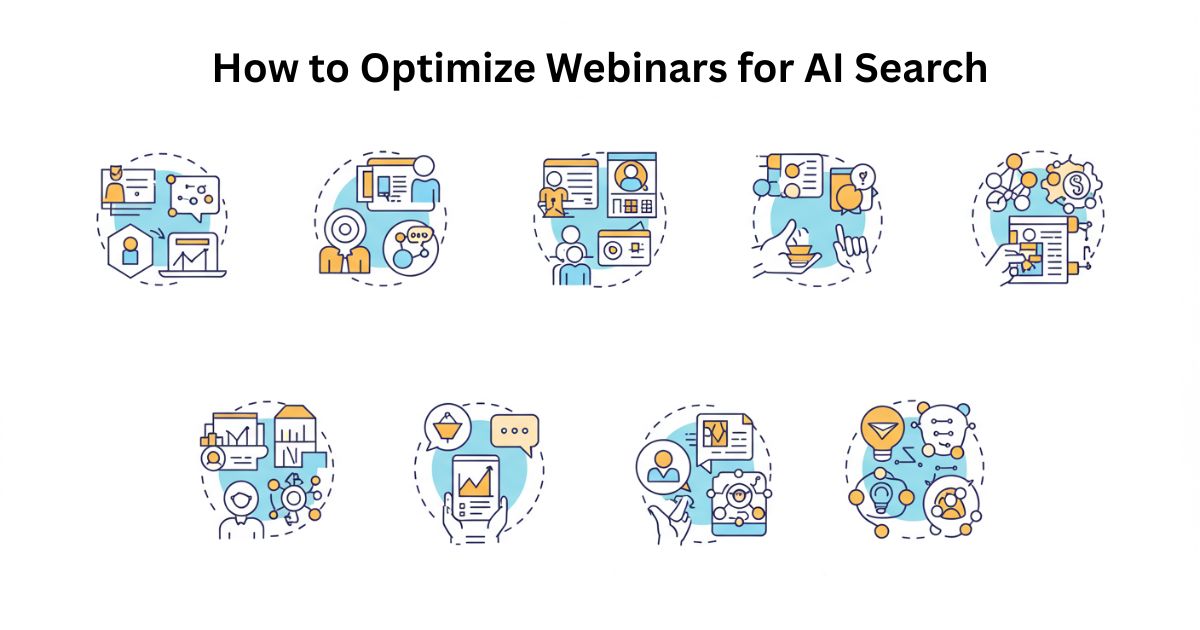
If your webinar is targeted at a specific geographic region, incorporate local SEO signals to enhance your online presence. Mention the city or region in your title, description, and headings. For example, “A Webinar for Small Business Owners in Chicago.” This helps you appear in geo-targeted searches, which are becoming increasingly common with voice assistants.
Your Blueprint for Future-Proof Webinars
Optimizing for answer engines and generative AI isn’t a one-time task; it’s a fundamental shift in how we approach content creation. By structuring your webinars around answering specific questions, you create assets that are valuable to both your audience and the search algorithms that connect them to you.
Start by focusing on your audience’s needs. Build your content strategy around their questions, and then use the technical and repurposing tactics outlined here to amplify your message. By doing so, you’ll not only see better performance from your webinars but also establish your brand as a trusted authority in the new era of AI-driven search.
For Further Reading, explore How to Promote Your Webinar: Email, Social & Ads Explained















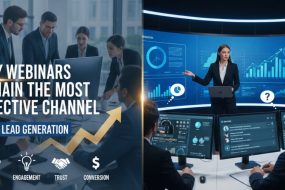
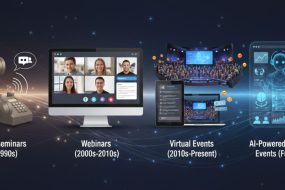


No Comments